All products featured are independently chosen by us. However, SoundGuys may receive a commission on orders placed through its retail links. See our ethics statement.
Best wired earbuds
January 16, 2025








Take SoundGuys’ quiz to find your best fit
Wired earbuds and IEMs are easy to use and much more affordable than their wireless counterparts. Looking for the best budget-friendly earbuds or the ultimate sound experience? We’ve got you covered. Check out our top picks for wired earbuds.
- This list was updated on January 16, 2025, to note the Truthear Hexa.
- This list was updated on May 14, 2024, to add the Tangzu Wan’er S.G. to our top picks.
Why are the Truthear Hexa the best wired earbuds for most people?
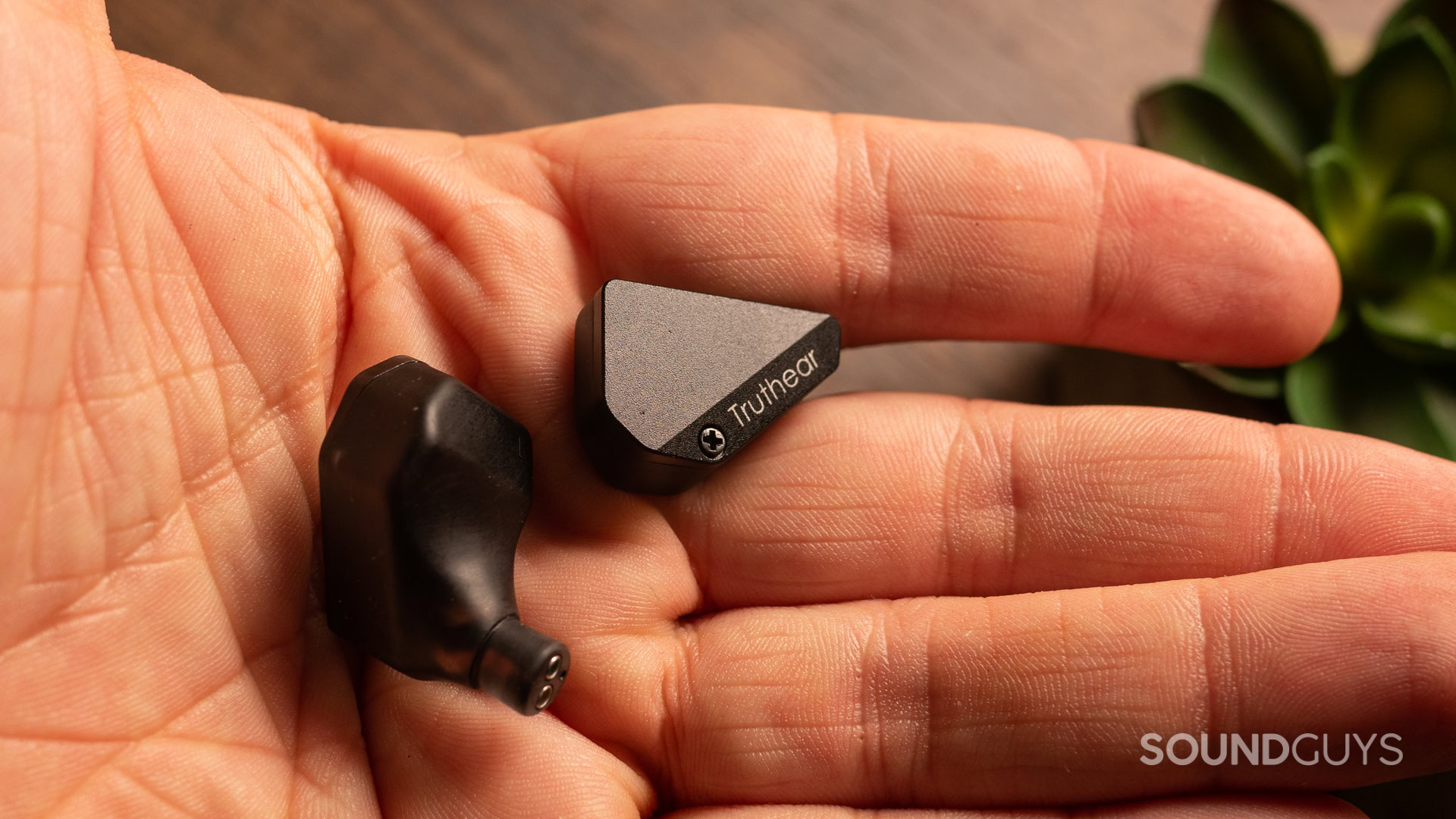
The Truthear Hexa is our top pick for most people because it offers great sound quality at a reasonable price. Not only does it offer a sound that closely matches our preference curve, but it does so under $100.
On top of the high performance, the Truthear Hexa offers silicone and memory foam eartips, allowing you to choose your best fit. We’re fans of the memory foam tips, as they offer extreme isolation and a comfortable form-fitting wear.
We appreciate the replaceable 2-pin cable, which extends the product’s life. Cables are usually the first components to break on wired earbuds and headphones, and the ability to replace them is key. The over-the-ear fit keeps the earbuds in place and doesn’t cause irritation.

Loading chart ...
Though there’s a general emphasis in the highs, setting a high-frquency shelf at about -2dB should fix any issues you have with the Truthear Hexa. This is an impressive measurement.
Best isolation: KZ ZS10 Pro
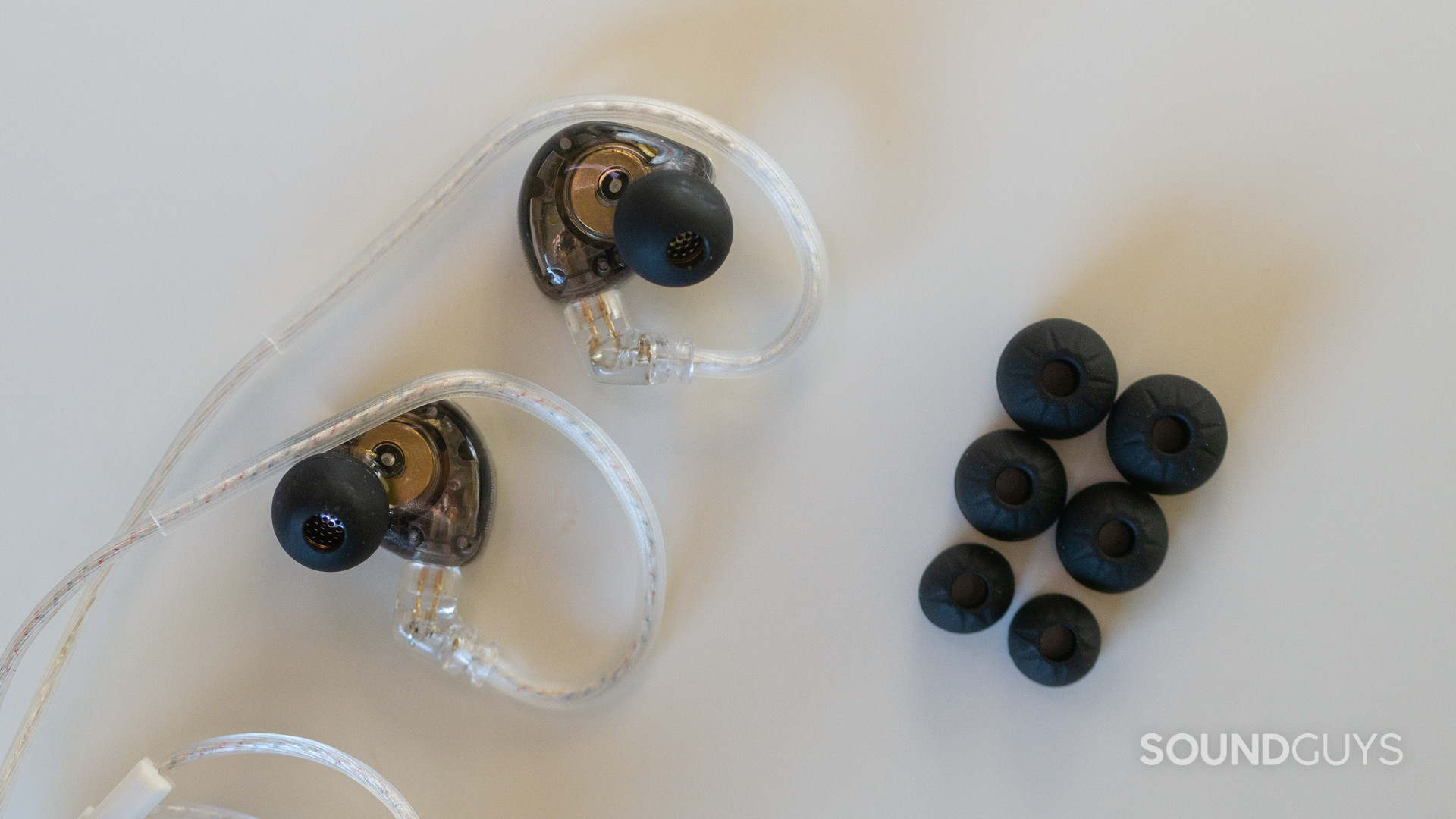
The KZ ZS10 Pro earbuds stand out for their performance and affordability in the crowded IEM market. Priced at $79.99, they offer a good balance between quality and cost, featuring impressive sound quality, a replaceable cable, and a sleek design. However, some users may find the fit and ear tips less satisfactory, along with minor design flaws.
Ideal for budget-conscious audiophiles preferring wired connections, the KZ ZS10 Pro includes a dynamic driver and four balanced armature drivers per earbud, emphasizing a balanced sound profile. Despite some durability concerns and potential issues with non-standard adapters, their overall performance, especially in noise isolation and audio quality (with notable high scores in Timbre and Immersiveness), makes them a compelling choice. While the market has evolved, offering numerous options under $100, the KZ ZS10 Pro remains a viable entry point for those exploring the IEM segment, balancing cost with a solid auditory experience.

Loading chart ...
Bass is over-emphasized compared to our preference, but many in-ears do that. t’s not apparent how the KZ ZS10 Pro splits up the job of handling different ranges of frequencies among the dynamic driver and four BA drivers in each earbud, but the results speak for themselves. We didn’t find any glaring deficiencies in our measurements.
Best durability: Shure SE215
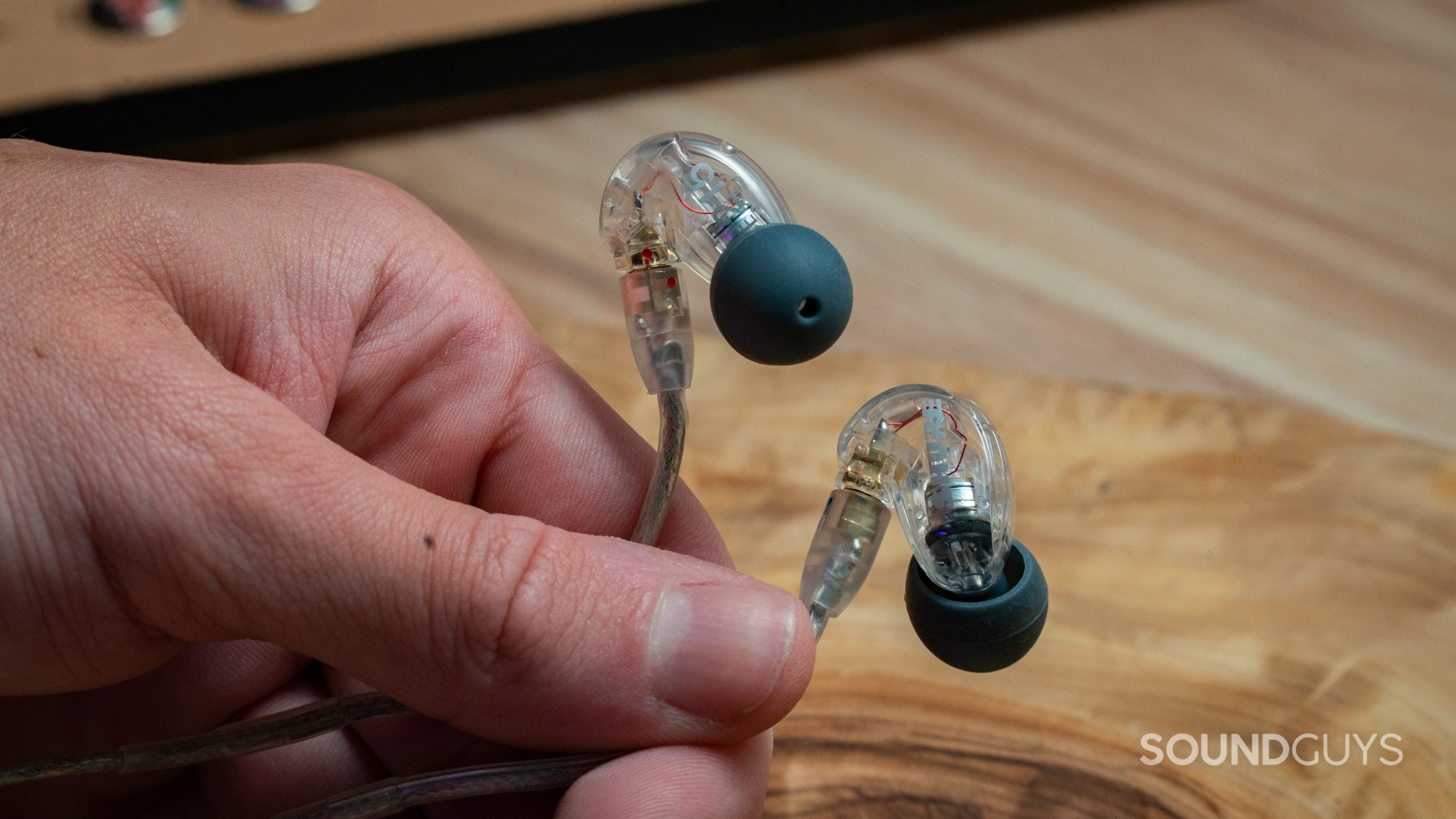
Shure makes plenty of audio equipment, but the Shure SE215 buds are a classic. Don’t let the plastic earbud housings fool you: these things are durable. I had a pair for years that endured undergrad without any signs of wear and tear.
The sound quality is identical to the Shure AONIC 215, and it is very good. You get a bit more bass than the ER2SE provides, making these a bit more versatile and appealing to a wider audience. The gently boosted bass response bodes well for popular genres of music. Attuned listeners may hear the under-emphasized treble that begins at 6kHz.
Loading chart ...
Like the other picks on this list, the Shure SE215 handily blocks out high frequencies. You’ll get the best isolation when you use Shure’s memory foam ear tips. Ambient noise will be effectively inaudible when you get a proper fit with these buds. The removable MMCX cable is a nice touch, too. We think these are some standout earbuds for around $100.


Best value: Moondrop Chu II
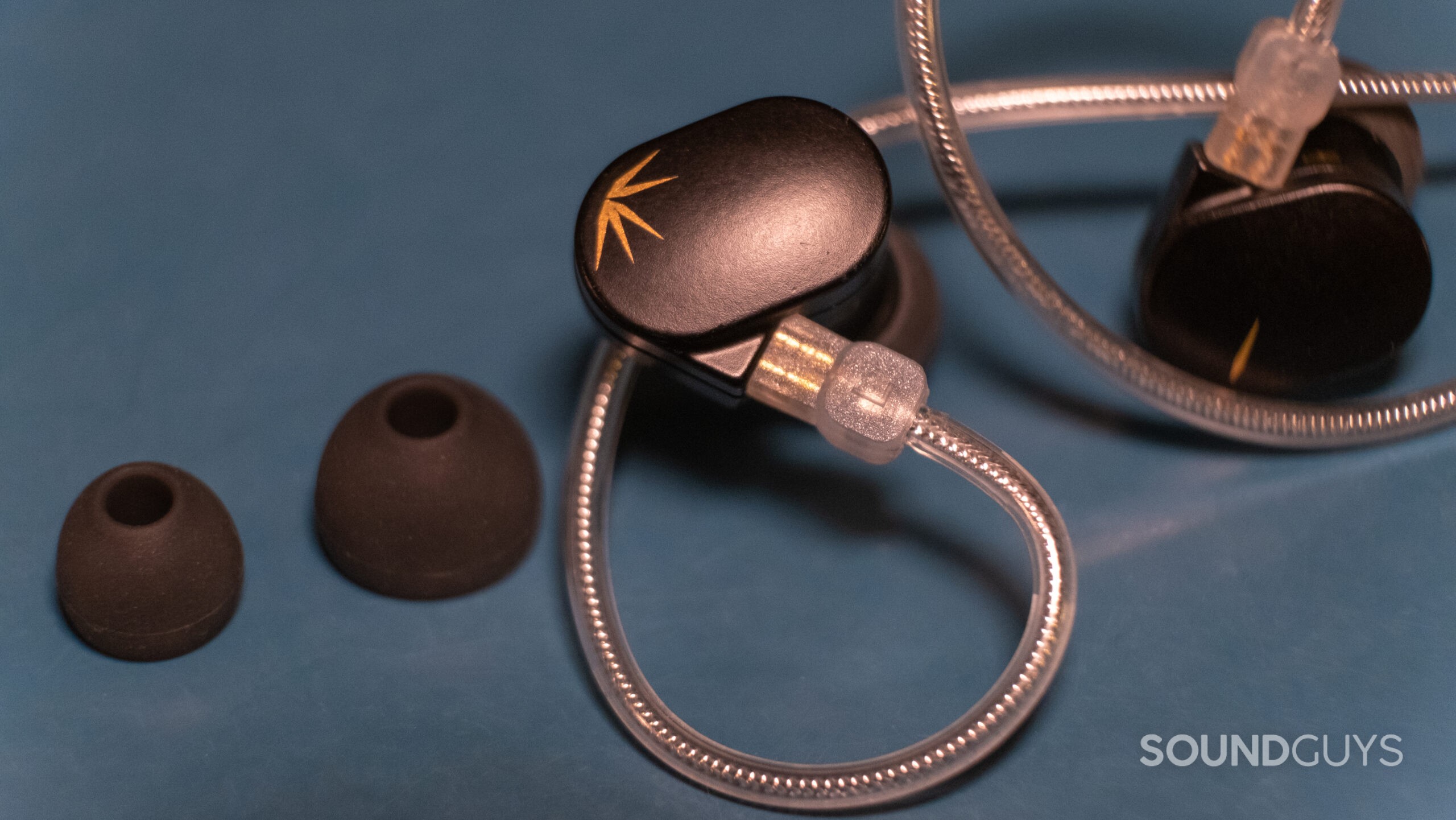
Anybody who needs a set of wired earbuds ought to consider the Moondrop Chu II for its value-to-performance ratio. They make a few upgrades from their predecessor, the Moondrop Chu, featuring an improved fit and a removable cable. Their sound quality is a standout feature, offering a satisfying frequency response that closely mirrors our preferred curves for bass and midrange, with only minor deviations in upper mid frequencies.
They come with three sets of ear tips (11mm, 12mm, and 13mm), allowing for a customizable fit, which is crucial for both comfort and sound isolation. However, it’s worth noting that they offer only average noise isolation, focusing on high-pitched sounds, and may not be the best choice for environments with louder background noises.
The build quality of the Moondrop Chu II, made of zinc alloy with a brass machined nozzle, is impressive considering its price point, which is typically less than $20. The earbuds feature a standard 3.5mm headphone jack. They are easy to drive with low impedance and high sensitivity, making them compatible with a wide range of devices without the need for an additional headphone amp. Overall, the Moondrop Chu II earbuds are an excellent choice for those looking for a low-cost entry into high-quality in-ear monitors (IEMs).


Loading chart ...
The frequency response through the bass and midrange mirrors our headphone preference curve rather well, with only minor differences. Upper mid frequencies deviate a little more, with some extra output in the 3kHz ear gain region. There’s limited extension into the highest frequencies, though this is pretty good for a single driver.
Best on a budget: Tangzu Wan’er S.G.
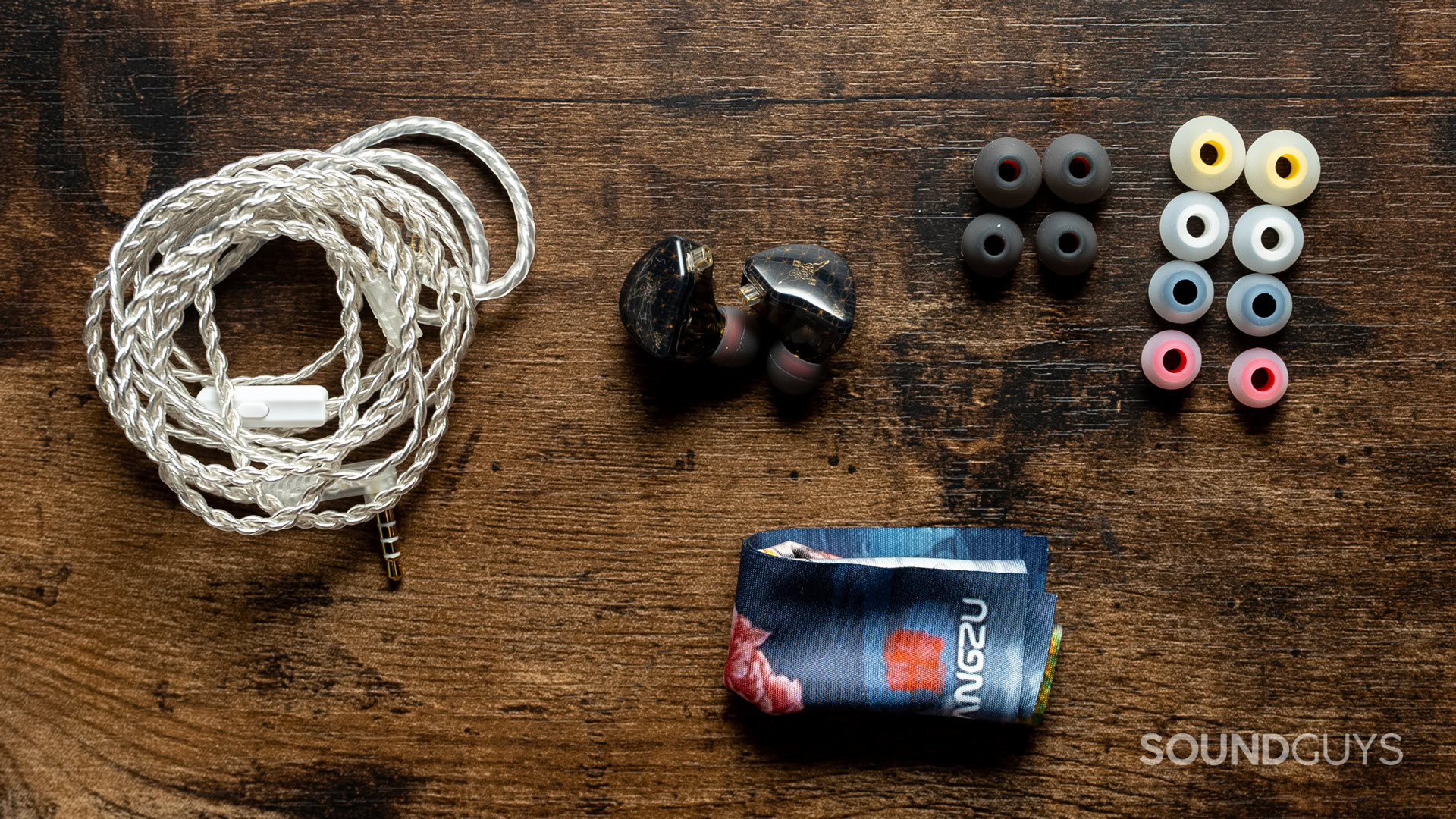
If you’re looking for excellent sound quality on a tight budget, the Tangzu Wan’er S.G. earbuds punch well above their meager $24.99 price tag. These wired in-ear monitors deliver a well-balanced sound signature that lacks any objectionable flaws. The mids are slightly dipped while the highs roll off gently, giving the sound a warm tilt that may appeal especially to younger listeners sensitive to sibilance.
The removable cable adds durability, and the assortment of silicone ear tips ensures a comfortable, noise-isolating fit. While the mic doesn’t reject background noise well, the Wan’er S.G. is an outstanding value pick for those looking for affordable wired audio without sacrificing sound quality.


Loading chart ...
With the dip in the mids and the relative rise in the bass, relative to our preference target you should perceive the sound of the Tangzu Wan’er S.G. as a bit bass-heavy with some damping of the highs. This kind of sound will likely appeal to younger listeners, as this group is often the most sensitive to the highs that are underemphasized here. Older listeners may want to equalize with a broad Q boost at 8.5kHz recover some of this range.
iPhone users should get the Apple EarPods (USB-C)
While Apple led the charge in killing the headphone jack, it’s also offering a wired solution. The EarPods with USB-C share design elements with the AirPods. They have an inline remote with a built-in microphone and the usual volume and playback controls. Unlike many earbuds, these don’t come with ear tips. Apple sticks to its ‘one-size-fits-all’ design philosophy, which does entail poor isolation. Still, the sound quality impresses, delivering decent drum and bass performance.
The microphone is unexpectedly good, especially for the price point. If you find yourself in many Zoom calls or online meetings, these earbuds are an affordable solution for excellent vocal clarity. For just $20, Apple’s wired EarPods with USB-C are a strong backup option that outperforms their price tag. They’re a smart buy for iPhone users, especially those after something more reliable than Bluetooth but aren’t quite ready to splurge on AirPods.

Check out the Linsoul TIN HiFi T2 for the basics done well
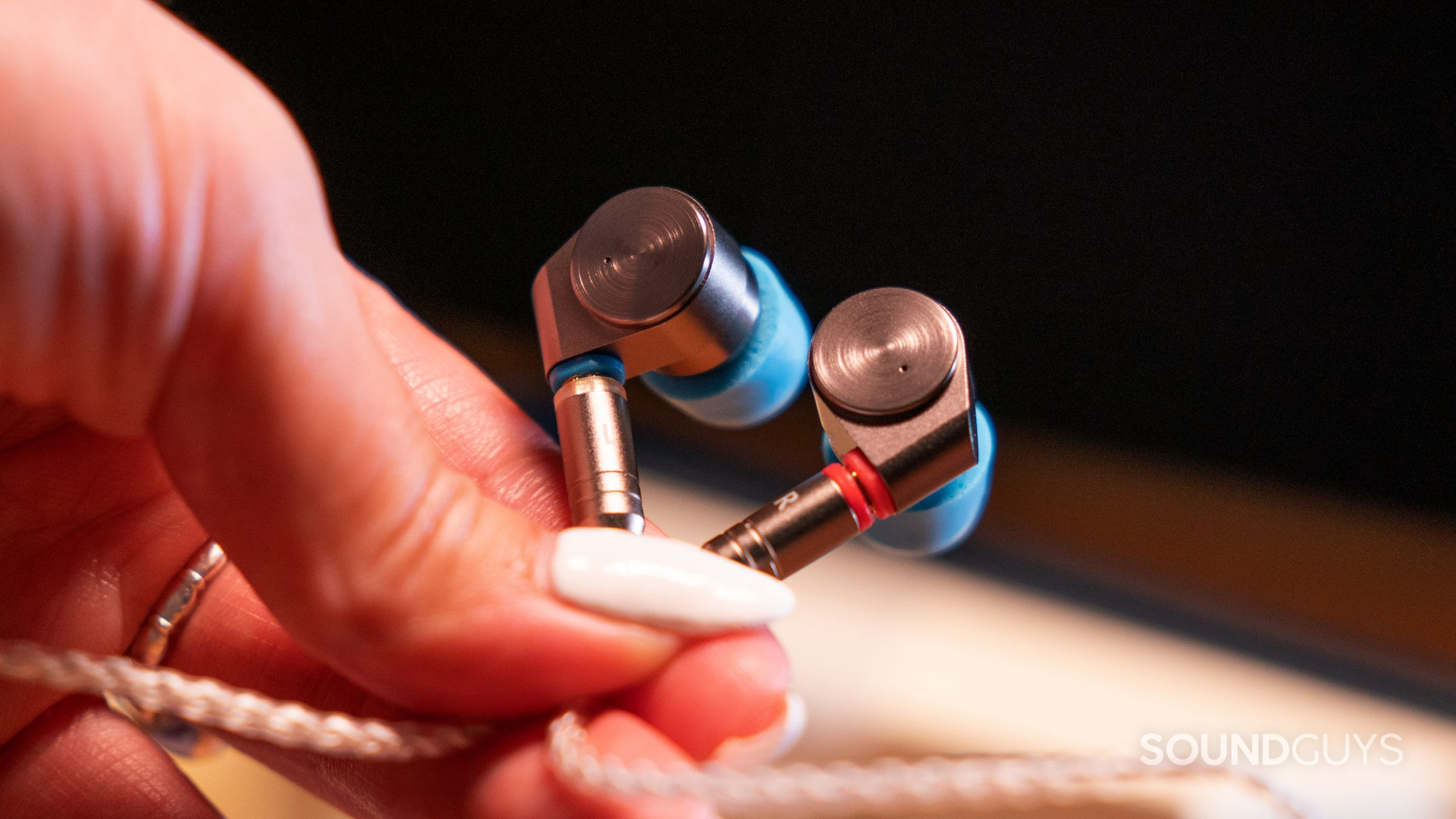
Sometimes, you don’t need anything crazy; you just need some solid sound to fit in your back pocket. For that, grab the TIN HiFi T2 earbuds. These make the rounds on forums everywhere because of their good sound and build for the price. The TIN Audio T2 does a pretty good job of following our studio curve, with some under-emphasis on the sub-bass and treble.
Don’t expect this to blow you away, but you can rely on the HiFi T2 to get the job done, whether working from home or commuting to the office. These earphones use a detachable MMCX cable, so you can swap out the wire when it frays. With the correct adapter, you can even turn these into wireless earbuds.

Best wired earbuds: Notable mentions
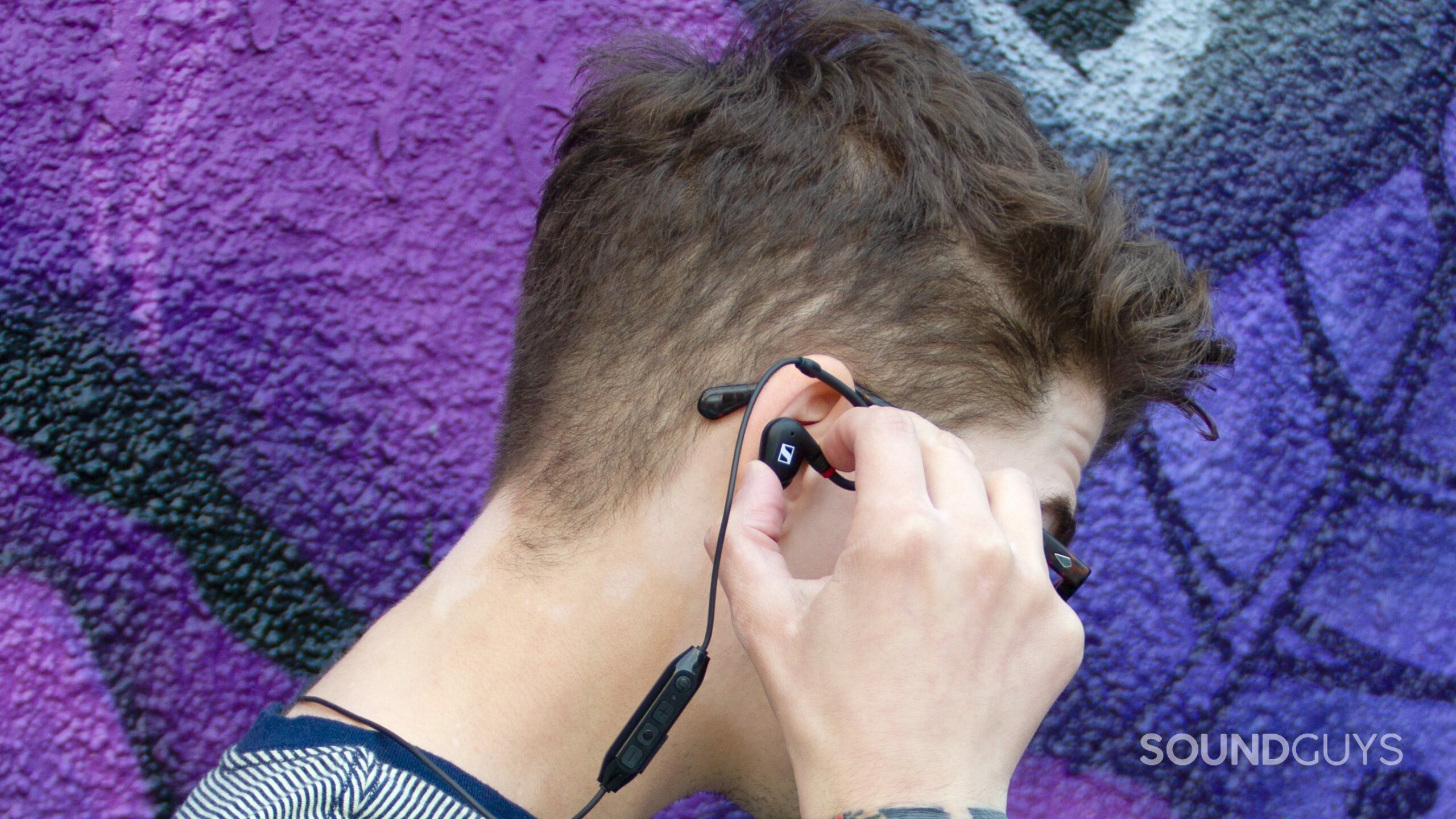
- JBL Endurance Run 2: The successor to the first JBL Endurance Run, these wired earbuds feature a flexible FlipHook design that allows you to wear them either in-ear or behind the ear. They have the same IPX5 rating and a built-in microphone for calls.
- FiiO FH5s: Building on our previously reviewed FiiO FH5, the FH5s have a semi-open design. Physical tuning switches allow you to adjust the sound, and the detachable cable ensures these buds will last a long time.
- KZ ATE copper in-ear: If you’re not looking to spend too much but prioritize sound quality over all else, this might be the solution for you.
- KZ ZSN Pro X ($23.99 at Amazon): The KZ ZSN PRO X offers superb sound for very little money, like under $30. Folks who prize sound quality the most will like this headset’s frequency response.
- Moondrop Chu ($21 at Amazon): These buds offer excellent sound quality at an entry-level price. Isolation and fit are great, but we wish the cable were replaceable.
- Moondrop Aria ($79 at Amazon): These are surprisingly good budget in-ears with a simple, yet elegant design. They sound great and do an okay job isolating you from your surroundings.
- Moondrop Aria SE ($79 at Amazon): These are a great pair of earbuds, so long as you know what you’re getting. They’re comfortable, focus on sound quality, and are repairable.
- Panasonic Ergo Fit ($13.56 at Amazon): Affordable, reliable, what’s not to love? This classic pair of earbuds comes with or without a mic and in many colors.
- Sennheiser IE 100 PRO Wireless ($149 at Amazon): These wireless earbuds use an MMCX connector, so you can also enjoy wired playback with a compatible 3.5mm cable. The module supports SBC, AAC, aptX, and aptX Low Latency over Bluetooth 5.0.
- Sennheiser IE 200 ($119 at Amazon): This was our former top pick, unseated by the Truthear Hexa. It’s still an amazing set of in-ears, but it’s quite a bit more expensive than the rest of the top picks.
- Sennheiser IE 300 ($281 at Amazon): These have a headphone jack and excellent passive isolation, so if you want a portable lossless music experience, get them.
- Shure BT2 ($180 at Amazon): If you are deeply invested in Shure’s products, these high-end wired earbuds let you take your favorite Shure earphones out and about without sacrificing much regarding audio quality.
- Shure SE112: With great sound and a comfortable fit, the Shure SE112 is a simple pair of wired earbuds that will cover the basics for anyone.
- Sony MDRXB55AP: The 12mm dynamic drivers and bass duct yield loud bass, while the ergonomic fit and four sizes of ear tips make the buds comfortable. There’s also an inline mic and remote for hands-free calls.
- 1MORE Triple Driver In-Ear ($68 at Amazon): These earbuds have three drivers inside each tiny housing — two of which are tiny balanced armature drivers that act as tweeters. You get an inline mic and control module here and nine sets of ear tips that vary in size and material.
What you should know about the best wired earbuds
Whether you’re looking to buy $200 earbuds or $20 earbuds, you want to know that your money will be a good product. When shopping around, you may encounter features or technical jargon you’re unfamiliar with. We recommend that complete newbies read our headphone buying guide, but those who may be a bit more experienced can skate by with the highlights below.
How should earbuds fit?
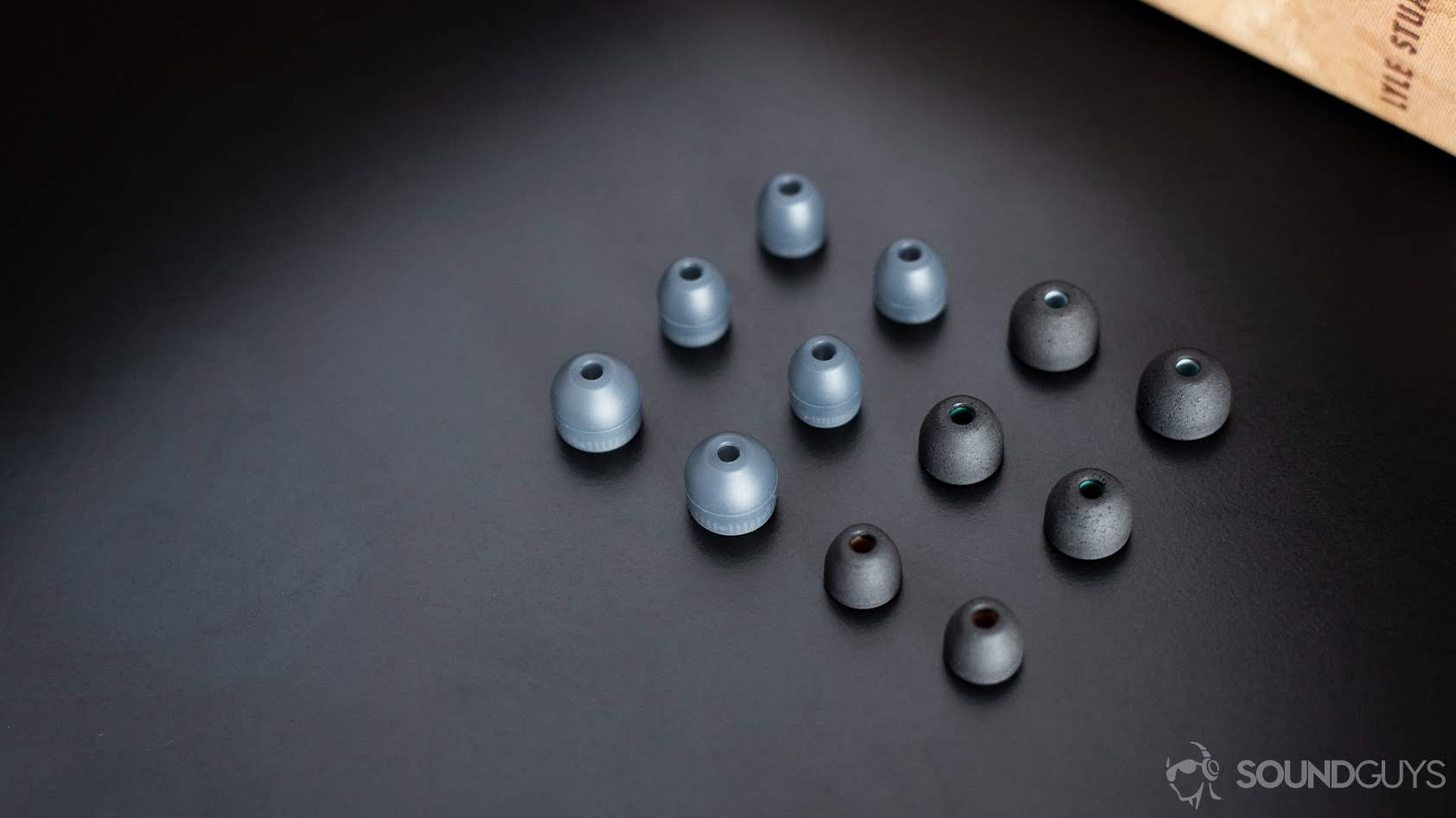
One of the most important factors when it comes to earbuds is seal and fit. A cogent seal will vastly improve sound quality because it isolates you from ambient noise. Bass reproduction is the first to go when there is no seal to the ear. By allowing external noise in, you’re degrading the overall sound quality of your earbuds because of auditory masking. Investing in third-party ear tips will vastly improve sound quality.
Can you use wired earbuds if your phone doesn’t have a headphone jack?
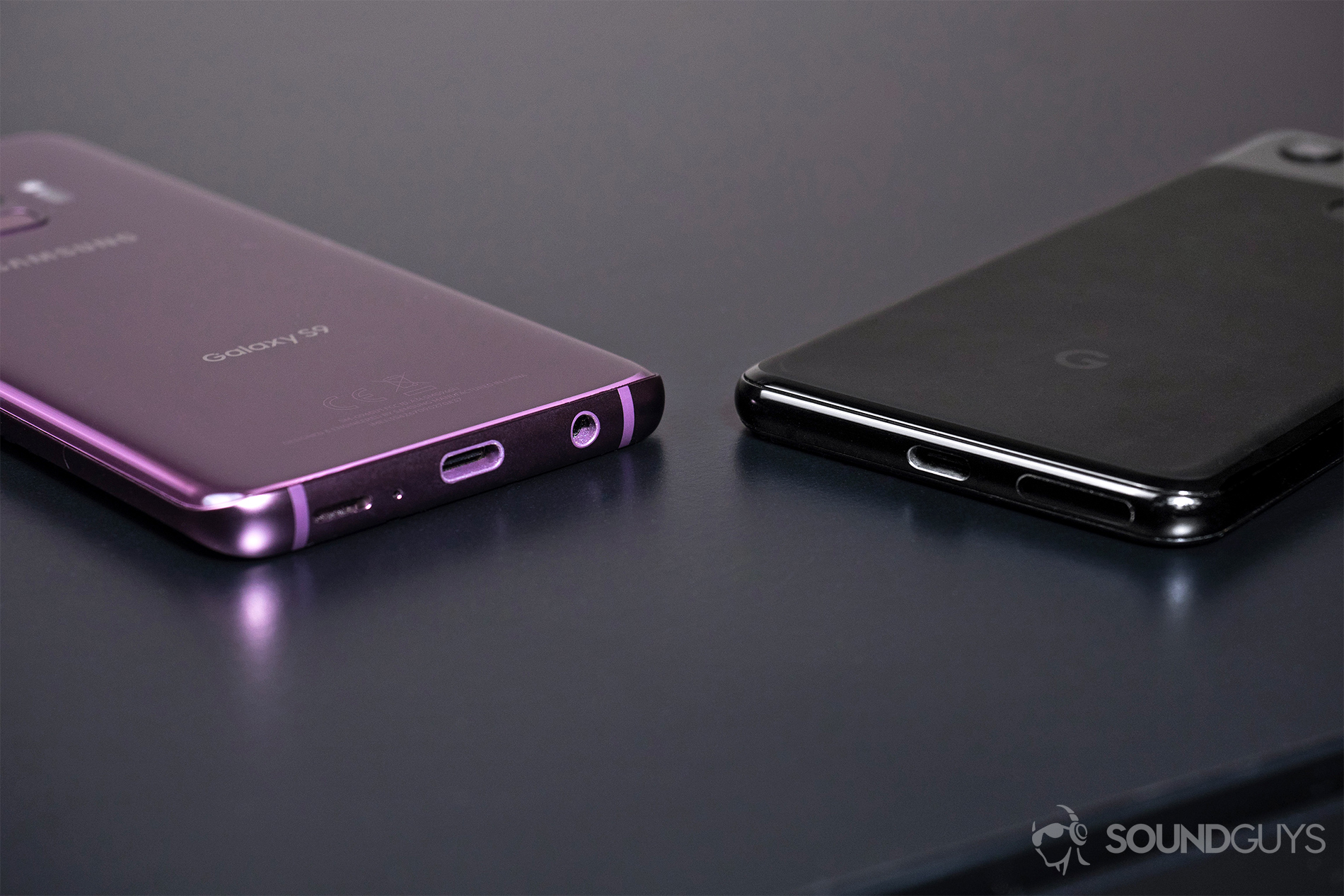
If your phone manufacturer nixed the headphone jack, you can always pick up a USB-C adapter. It’s a bit cumbersome, but it does the trick. Otherwise, you can always look for cheap wireless earbuds or USB-C headphones. Regarding the latter, though, the technology has yet to impress us. It seems like a dead market at this point.
What frequency response is good for wired earbuds?
Loading chart ...
Frequency response denotes how well a pair of earbuds can reproduce the audible range of sound frequencies. It refers to the ability of each component in your playback chain to reproduce the signal being fed to it accurately.
In our reviews, to help you interpret the product’s measured frequency response, we also display a reference curve (colored pink) on the same chart that represents what we consider the ideal frequency response shape for the kind of product you’re looking at. You might see this referred to as the SoundGuys “House Curve,” “Preference Curve,” or “Target Curve.” You can learn more about it here. Unfortunately, nothing is perfect, and it’s further confounded by the fact that our ears aren’t perfect. This is why some manufacturers allow you to modify the frequency response of their products to help compensate for variations in our hearing or specific listener preferences for bass and treble.
How we choose the best wired earbuds
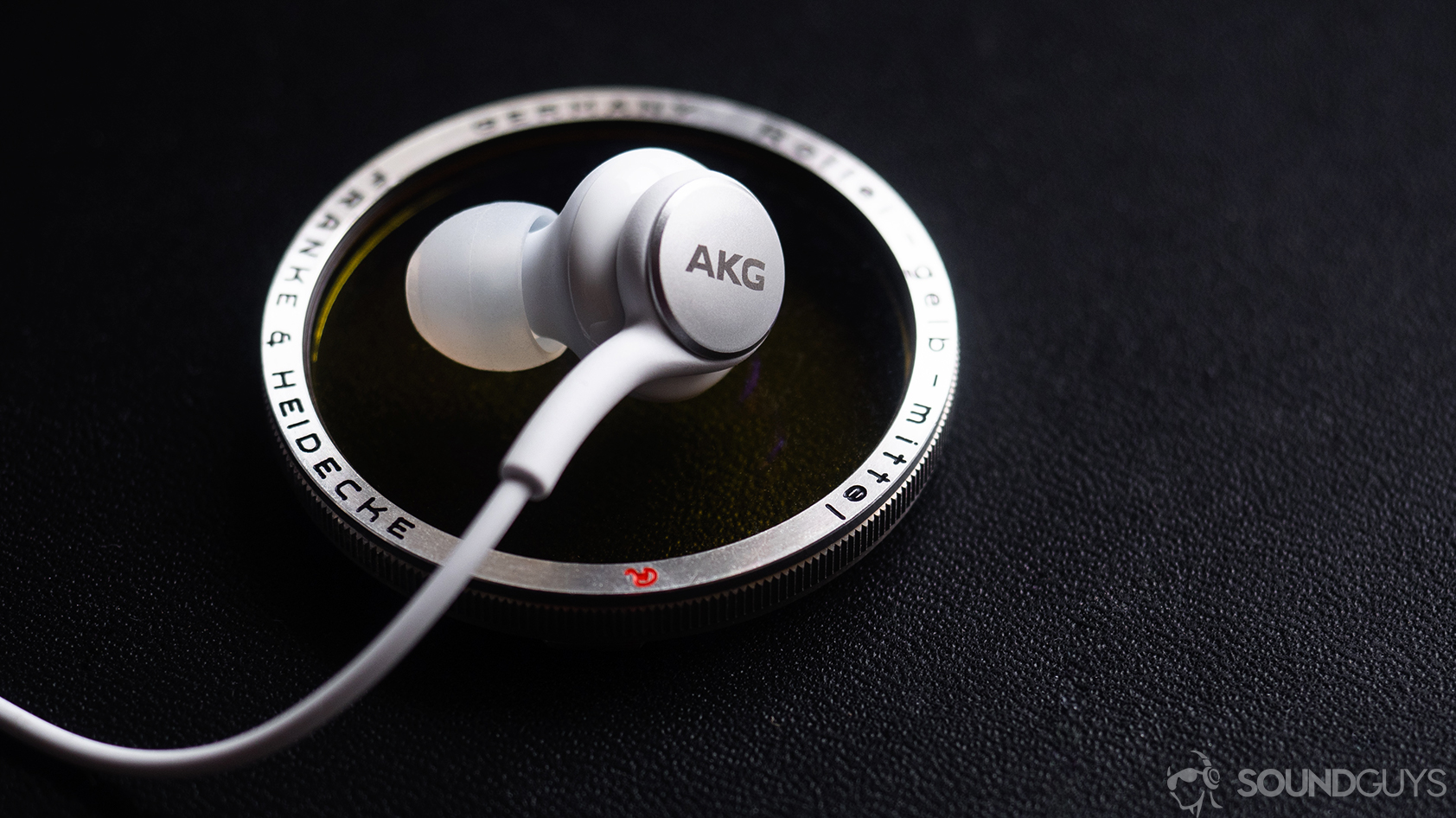
We’ve been covering the audio industry for some time, so it’s not a huge mystery which companies are great at this sort of thing and which aren’t as much. However, we give everyone their fair shot because there are always some surprises. That said, we’ve culled countless wired earbuds to find the best possible options for you.
Why you should trust SoundGuys
We station ourselves at this site daily and recognize the constant evolution of consumer and professional needs. Inundated with audio products, we expertly sift through the noise to separate the good from the disappointing. We have multiple years of experience keeping tabs on the audio industry and rely on that to guide our review process.
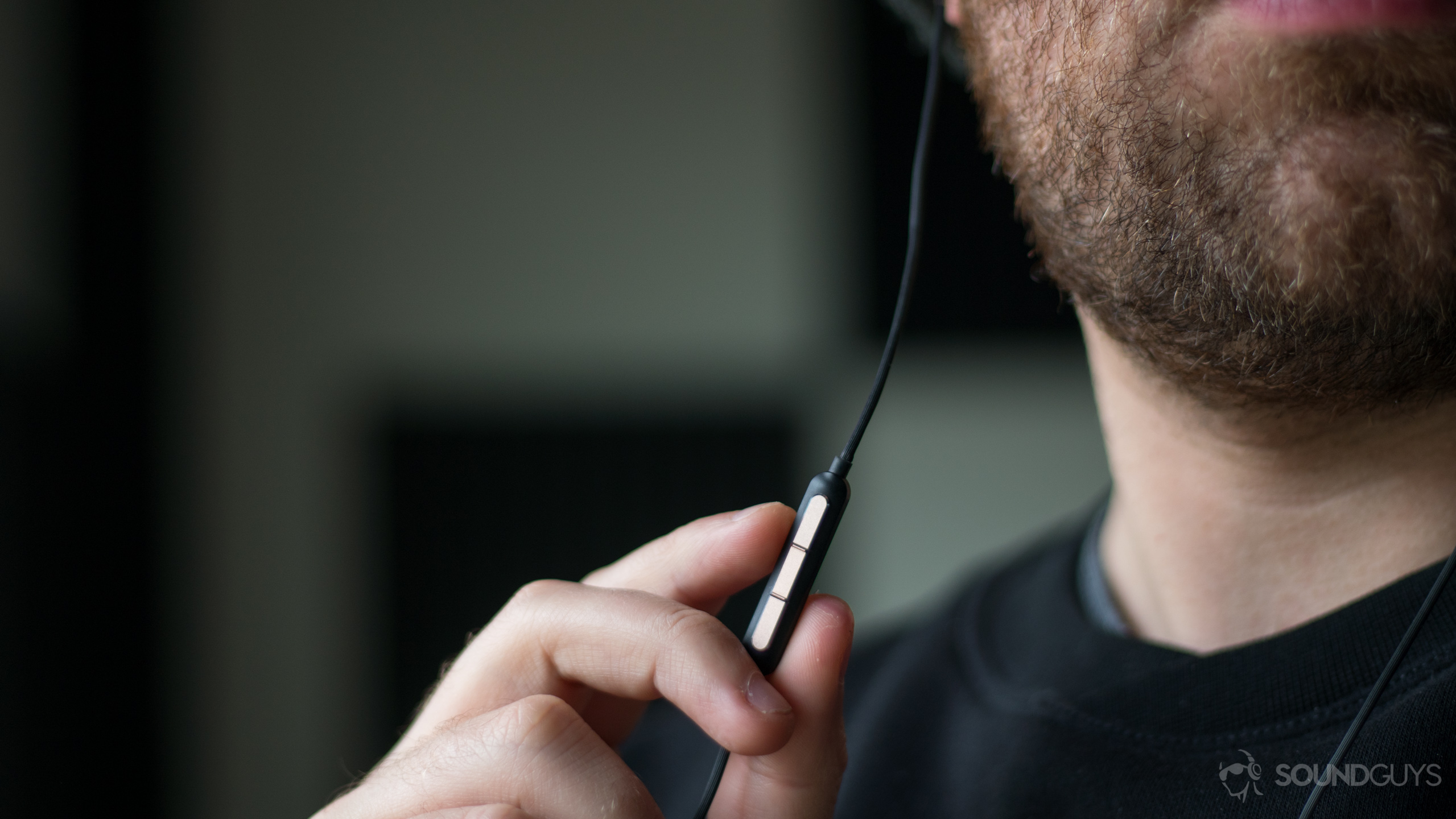
We rely on objective measurements of products where we can. None of our writers may profit or benefit from steering readers to or from a certain audio device. While the site uses referral links, none of our writers will know whether or not a link was clicked. If you so choose, our ethics policy is publicly available.
Frequently asked questions about the best wired earbuds
When choosing wired earbuds, prioritize a snug fit for optimal sound quality and noise isolation. Make sure the earbuds are compatible with your phone—consider a USB-C adapter if needed. Lastly, look at frequency response reviews to align with your audio preferences.
There are a few different types of dongles, and USB-C audio has both benefits and drawbacks. Let me direct you to this explainer article which will hopefully answer your questions about USB audio.
Your best bet for a good pair of earbuds for small ears is one that comes with a lot of ear tip sizes. Of our top picks, the Etymotic ER2SE and ER4SR have plenty of ear tips.
Noise isolation refers to the amount of ambient noise that is physically blocked by your earbuds or headphones. The degree to which noise is blocked depends on the design of a product, such as how well a pair of earbuds create a good seal. This form of noise attenuation is passive since there’s no electronic circuitry involved. On the other hand, noise canceling is the process of using active circuitry to cancel out ambient noise, which works on top of noise isolation. Because of the processing needed, you’ll find that noise canceling headphones and earbuds can be expensive.
The good news is we know audio quality doesn’t correlate to price, so cheaper products don’t necessarily sound bad. Build quality is one of the first things to go when hunting, even for the cheap wired earbuds. Materials are predominantly plastic. You certainly won’t find any sort of Kevlar-reinforced braided cable like you will with pricier products. Additionally, companies allocate fewer research and development resources to cheaper products. Things are passable and could be good for the price. However, they won’t outperform professional IEMs.
Other than the Sony WI-C310 and the JLab GO Air POP, there aren’t many options out there. At such a low price point, there are bound to be compromises. Sure, other wireless earbuds are available for less than $20, but they tend to sacrifice audio quality for wireless connectivity. You’re better off spending your cash on a pair of good-sounding wired earbuds.
Consumers often worry that their phones aren’t enough to power their earbuds or headphones. While that might be the case if you’re spending hundreds of dollars on specialized in-ears and plan on plugging them into a computer from 1997, it isn’t necessary for anyone listening to music on a modern smartphone or computer. Especially with these earbuds under $100 that we chose. They were designed to be powered by typical electronics, assuming, of course, that your phone still has a headphone jack. You still shouldn’t have any issues with power if you’re using a dongle, but it’s definitely annoying.